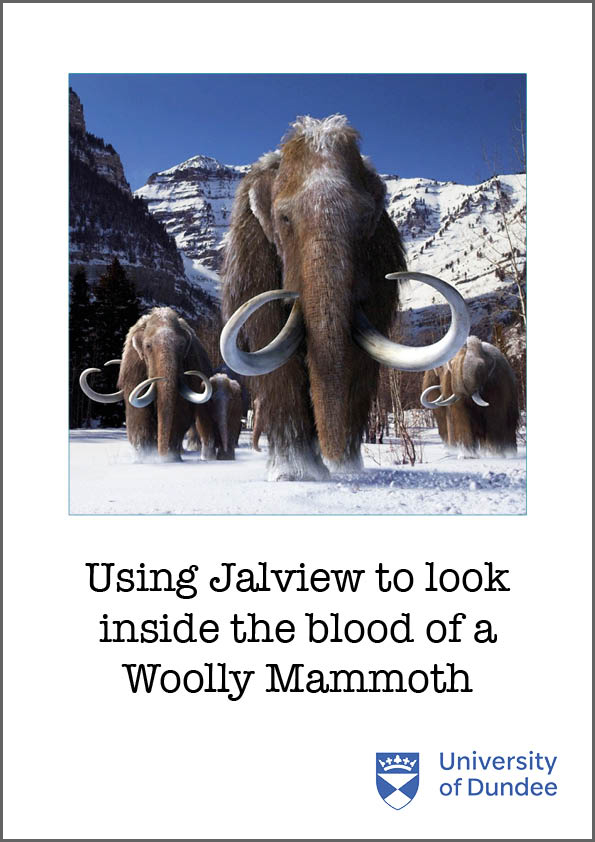Viewing Woolly Mammoth Haemoglobin
Background
Woolly mammoths are huge, shaggy beasts with tusks up to 15 feet in length. They are ancestors of the elephant and are roughly the same size. They appeared on the earth about 700,000 years ago, roaming across the ice plains of northern Eurasia and North America. About 10,000 years ago, changes in the climate and vegetation after the Ice Age, along with the presence of humans, lead to their extinction. A few isolated communities survived, such as the one on Wrangel Island in the Arctic Ocean off Siberia, however they died out about 4,000 years ago.
A few woolly mammoths were preserved, nearly intact, in solid blocks of ice in the permafrost. This has allowed scientists to extract fragments of their DNA and gradually piece together the woolly mammoth’s genome¹. Scientists have used the genetic code to recreate the haemoglobin of the extinct woolly mammoth using recombinant gene expression². Haemoglobin is the protein in the blood responsible for delivering oxygen to the body.
The activities on this page use Jalview to:
- Examine the HBA-T2 gene in the extinct woolly mammoth genome that is responsible for the production of the haemoglobin alpha subunit.
- View the protein sequences and 3D structure of woolly mammoth haemoglobin, this was recreated from the genetic code in the DNA using recombinant genes expression.
- Compare the haemoglobin alpha subunit of the woolly mammoth with that of the woolly mammoth’s nearest living relatives, the African elephant and Indian elephant.
- Compare the haemoglobin alpha subunit of the woolly mammoth with that of other animals.

The Woolly Mammoth Jalview Workbook
Click the link to view the workbook in an adjacent window (or download depending on the browser), please follow the instructions in the exercises.
The Links to the Exercises
Clicking the links below will open JalviewJS in an adjacent browser tab and read in files as appropriate.
Note it may take a little while to load the sequences.
Exercise 1: Click to view the woolly mammoth HBA-T2 gene that codes for the haemoglobin alpha subunit
Exercise 2: Click to view the protein sequences and 3D structure of woolly mammoth haemoglobin
Exercise 3: Click to compare the haemoglobin alpha subunit of the woolly mammoth with that of the African and Indian elephants
Exercise 4: Click to compare the haemoglobin alpha subunit of the woolly mammoth with that of other animals
3D Model of Woolly Mammoth Haemoglobin
The extinct woolly mammoth haemoglobin is made up of two α-subunits strands (cream ribbons) and two β-subunits strands (lavender ribbons). The heme molecule is represented by a stick-and-ball model. The iron atoms are coloured orange. The carbon, nitrogen and oxygen atoms are coloured grey, blue and red respectively.
References
- Metagenomics to Paleogenomics: Large-Scale Sequencing of Mammoth DNA. Poinar, H., Schwarz, C., Qi, J., Shapiro, B., MacPhee, R., Buigues, B., Tikhonov, A., Huson, D., Tomsho, L., Auch, A., Rampp, M., Miller, W. and Schuster, S. (2006) Science 311: 392-394. https://doi.org/10.1126/science.1123360
- Structures of haemoglobin from woolly mammoth in liganded and unliganded states. Noguchi, H., Campbell, K.L., Ho, C., Unzai, S., Park, S.-Y., Tame, J.R.H. (2012) Acta Crystallogr D Biol Crystallogr 68: 1441-1449. https://doi.org/10.1107/S0907444912029459
Please visit the Jalview Schools page for more information about using Jalview to visualise DNA, RNA and proteins.